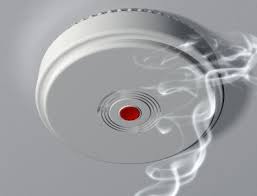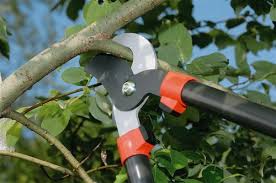October Winterization
October is the first full month of fall; by the end of this
month, most of your winterization should be completed. Falling leaves and
dwindling daylight signal a final opportunity to do some outdoor organizing
before winter settles in.
Try to do this on a warm day if you have asphalt shingles on your roof, so the shingles will be flexible. Use roofing cement to seal cracked and torn shingles and to reattach curled shingles. Then tack down the damage further with galvanized roofing nails, and cover the exposed nail heads with roofing cement. Split wood shingles can be patched with roofing cement as well.
Repair siding
Do a fall siding inspection and remedy any problems you find. Look for damaged paint, warped or split
 wood, cracks or holes in stucco, and missing or slipped
siding panels. Your repair tool kit will depend on what kind of siding you
have: For example, wood siding may require wood putty, waterproof glue, nails
and screws; stucco may require wire mesh, stucco patching compound, a trowel
and a chisel. Most types of siding require a coating of sealant or primer, and
paint to finish the repair and ensure waterproofing.
wood, cracks or holes in stucco, and missing or slipped
siding panels. Your repair tool kit will depend on what kind of siding you
have: For example, wood siding may require wood putty, waterproof glue, nails
and screws; stucco may require wire mesh, stucco patching compound, a trowel
and a chisel. Most types of siding require a coating of sealant or primer, and
paint to finish the repair and ensure waterproofing.
Do a fall siding inspection and remedy any problems you find. Look for damaged paint, warped or split
Reinforce windows
Replace your screens with storm windows. If your screens are dirty or damaged,
repair and clean before storing them to prevent further deterioration. Light
scrubbing followed by a blast from a hose will eliminate bird droppings and
other grime. Small tears can be sewn up with thin wire. If you have older
single-pane windows and no storm coverings, apply heat-shrink plastic to the
inner or outer window frame to create an insulating air space and save heating
expense.
Fire fluency
Make sure your damper is in good working order by opening and shutting it prior to lighting the first fire of the season. If you didn't clean your chimney at the end of the heating season, do it now — especially if you burn soft woods, which release more creosote. Often the first indication that a chimney needs cleaning is a chimney fire, so preventive maintenance is important.
Make sure your damper is in good working order by opening and shutting it prior to lighting the first fire of the season. If you didn't clean your chimney at the end of the heating season, do it now — especially if you burn soft woods, which release more creosote. Often the first indication that a chimney needs cleaning is a chimney fire, so preventive maintenance is important.
Detect deadly gas
If you heat your home with wood heat or a gas heater, a carbon-monoxide detector is a must. These devices look and sound like smoke detectors, but they detect carbon-monoxide gas instead. Units that plug into an outlet are also available.
If you heat your home with wood heat or a gas heater, a carbon-monoxide detector is a must. These devices look and sound like smoke detectors, but they detect carbon-monoxide gas instead. Units that plug into an outlet are also available.
Check batteries in smoke detectors
Daylight saving time ends Nov. 7. Get into the habit of checking smoke-
.
 detector
batteries when you "fall back" and "spring ahead." Also
make sure household fire extinguishers are fully pressurized and in good
working order.
detector
batteries when you "fall back" and "spring ahead." Also
make sure household fire extinguishers are fully pressurized and in good
working order.
Daylight saving time ends Nov. 7. Get into the habit of checking smoke-
.
Close seasonal air conditioners
If you live in a place where air conditioners are used seasonally instead of
year-round, this is a good month to close them down. Switch off power, make
sure the condensate drain is clear, and clean condenser coils and filters (a
vacuum will do). Either remove window units or cover ............................................... them, to protect your home
from drafts and the units from inclement weather.
Bleed air from radiators
Radiators can get air pockets in them when not in use. If air pockets stay, they will keep the unit from heating up to its full capacity. If your unit doesn't have automatic air valves, you need to bleed it prior to every heating season. To bleed air out, turn on the furnace and circulator and open the supply valve to the radiator. Find the bleeder valve (it's usually opposite the supply valve) and open it while holding a pan to it. Air should be released, followed by hot water (thus the pan). Close the valve as the water comes out. Lightly feel the radiator to make sure it is heated along its entire surface; if there are gaps, repeat the procedure.
Radiators can get air pockets in them when not in use. If air pockets stay, they will keep the unit from heating up to its full capacity. If your unit doesn't have automatic air valves, you need to bleed it prior to every heating season. To bleed air out, turn on the furnace and circulator and open the supply valve to the radiator. Find the bleeder valve (it's usually opposite the supply valve) and open it while holding a pan to it. Air should be released, followed by hot water (thus the pan). Close the valve as the water comes out. Lightly feel the radiator to make sure it is heated along its entire surface; if there are gaps, repeat the procedure.
Cut brush back from the house
 Before stowing all of your gardening equipment for the winter, walk around your
house with a weed whacker and a pair of pruners and cut back any brush, weeds
or branches that contact your house. This task will eliminate a common access
point for insects, rodents and rot. It will also keep branches and shrubs from
scraping away at your siding during windstorms.
Before stowing all of your gardening equipment for the winter, walk around your
house with a weed whacker and a pair of pruners and cut back any brush, weeds
or branches that contact your house. This task will eliminate a common access
point for insects, rodents and rot. It will also keep branches and shrubs from
scraping away at your siding during windstorms.
Watch those leaves
If you don't want the tannin in fall leaves to leave hard-to-clean imprints on your deck and concrete walkways, keep those surfaces leaf-free. If you do get some leaf prints, try a solution of half water and half bleach (test it first in an unobtrusive spot — it may lighten the wood on your deck) or trisodium phosphate (commonly known as TSP) and warm water. Or, just leave the prints and consider them an artistic addition to your exterior look.
If you don't want the tannin in fall leaves to leave hard-to-clean imprints on your deck and concrete walkways, keep those surfaces leaf-free. If you do get some leaf prints, try a solution of half water and half bleach (test it first in an unobtrusive spot — it may lighten the wood on your deck) or trisodium phosphate (commonly known as TSP) and warm water. Or, just leave the prints and consider them an artistic addition to your exterior look.
Winterize external plumbing systems

This is the most important job of fall if you live in an area that freezes in the winter. The simple fact that water expands upon freezing has caused countless homeowners innumerable woes. Ignore this job and flooding, water damage and thousands of dollar’s worth of plumbing bills will be your constant winter companions.
This is the most important job of fall if you live in an area that freezes in the winter. The simple fact that water expands upon freezing has caused countless homeowners innumerable woes. Ignore this job and flooding, water damage and thousands of dollar’s worth of plumbing bills will be your constant winter companions.
Here's your to-do list:
·
Drain underground sprinkler systems.
·
Have outdoor pools drained and professionally
serviced.
·
Drain exterior water pipes and any pipes that
run through unheated areas (such as a garage, crawl space or unheated porch).
If draining these pipes isn't possible, wrap them with foam insulation or heat
tape.
·
Cover exposed spigots with foam covers. Or, if
cosmetics and ease of removal don't matter, wrap spigots in layers of newspaper,
cover the newspaper with a plastic bag, and seal the whole affair with duct
tape.
·
Drain and store garden hoses. Leave one hose and
nozzle somewhere that's easily accessible; you'll need it for gutter cleaning
and car washing.
No comments:
Post a Comment